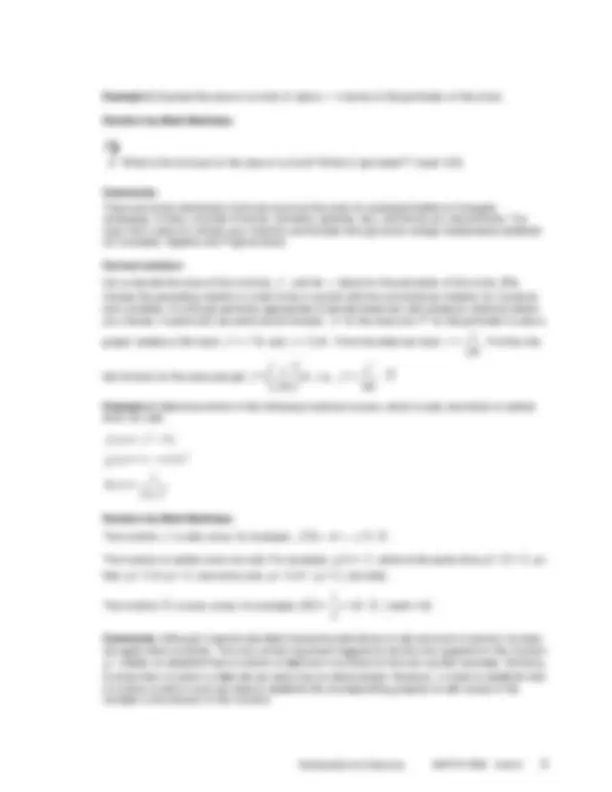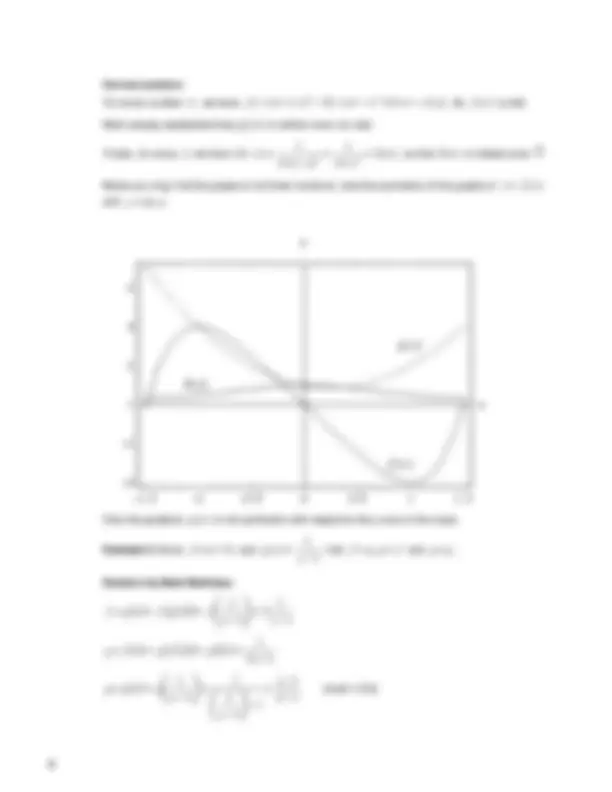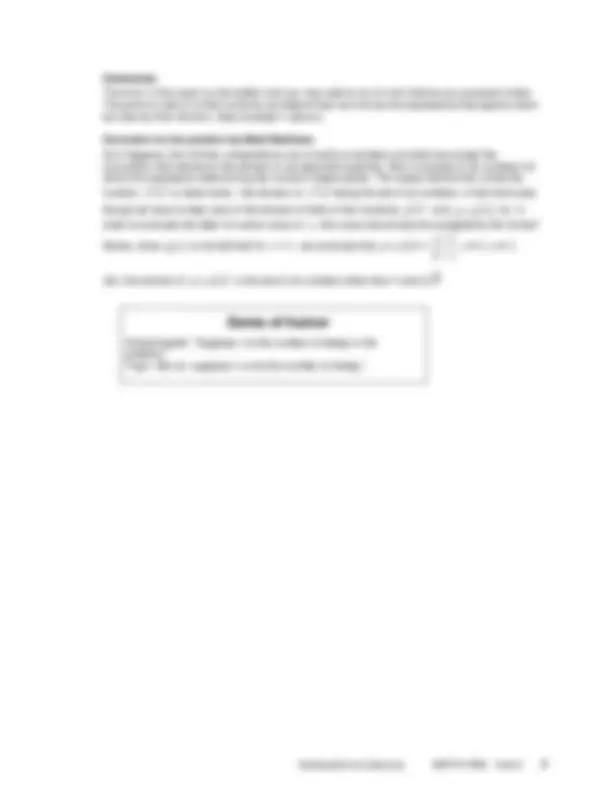





Study with the several resources on Docsity

Earn points by helping other students or get them with a premium plan


Prepare for your exams
Study with the several resources on Docsity

Earn points to download
Earn points by helping other students or get them with a premium plan
Community
Ask the community for help and clear up your study doubts
Discover the best universities in your country according to Docsity users
Free resources
Download our free guides on studying techniques, anxiety management strategies, and thesis advice from Docsity tutors
math 1500 - Intro to calculus
Typology: Lecture notes
1 / 7

This page cannot be seen from the preview
Don't miss anything!




Function is one of the primitive notions in this course, indeed, in mathematics in general. Throughout this course we shall be manipulating and analyzing functions.
When you have completed this unit, you will be able to:
Read Section 1.1. We shall be using primarily visual and algebraic representation of functions (by
graphs and formulas respectively). Do some of problems at the end of that section; include some of problems 31–67 (domain of functions) and 69–79 (odd and even functions).
Read section 1.3. Focus on the last section: Combinations of Functions. The notion of composition of functions is particularly indispensable in calculus, and will be used extensively later (notably in
the section on the Chain Rule of differentiation). Do some of problems 1–57 and 62–64, regard problems 31–53 as more important than the others.
Example 1. Find the domain of the function
c) h ( x ) =
x
x
2
Solution by Mark Markless:
a) Since is defined only for non-negative numbers, it follows that the domain of f ( x )is all x
such that x ≥ 0. (mark: 0.5/2)
Comments:
As a general rule, if the domain of a given function f ( x )is not explicitly specified (as in the part
(a) here), then it consists of all numbers x , for which f ( x )is well defined.
Introduction to Calculus MATH 1500 Unit 2 1
Correct solution:
a) The radicand 2 x − 1 must be at least 0 in order 2 x − 1 to exist. So we need to solve 2 x − 1 ≥ 0.
2 x − 1 ≥ 0 ⇔ 2 x ≥ 1 ⇔ x ≥.
Hence, the domain of the function is the set of all real numbers x that satisfy 2
b) Here we are told that the domain of g ( x ) is the set of all numbers x such that 2 ≤ x ≤ 3 (the
c) The denominator should never be 0 , for division by 0 is not defined in the set of real numbers. This means that (^320) 2 x + x + ≠. Using (for example) the quadratic formula we find that the
solutions of 3 2 0
2 x + x + = are -1 and -2. So, we conclude that the function h ( x )is well defined for all x except for x = − 1 and x = − 2 (that is, the domain is the union of the
Example 2. Find the domain and sketch the graph of the function
x x
x x f x.
Correct solution:
Note first the domain: it is given to consist of all non-zero numbers (simply because f ( x )is defined only for such numbers).
The graphs, apparently, consists of two pieces: it is the line (^) y = − x when (^) x < 0 , and it is the line
y = x + 1 when x > 0. Note that there is a gap in the graph for x = 0.
Correct solution:
For every number x , we have ( ) ( ) 5 ( ) 5 ( ) 5 5 f − x = − x − − x =− x + x =− f x. So f ( x )is odd.
Mark already established that g ( x ) is neither even nor odd.
Finally, for every x we have ( ) 1
2 2 hx x x
h x =
Below you may find the graphs of all three functions: note the symmetry of the graphs of y = f ( x )
and (^) y = h ( x ).
f ( x )
g ( x )
h ( x )
Only the parabola g ( x )is not symmetric with respect to the y-axis or the origin.
Example 5. Given f ( x )= 3 x and 1
x
g x , find f g , g f and g g.
Solution by Mark Markless:
x x
f gx f gx f
x
g f x g f x g x
x
x
x
g gx g. (mark 1.5/2)
Comments:
The error in this case is a bit subtler and you may wish to try to find it before you proceed further.
The point to note of is that functions are determined not only by the expressions that specify them
but also by their domain. (See example 1 above.)
Correction to the solution by Mark Markless
As it happens, the first two compositions are correctly evaluated, provided we accept the
convention that whenever the domain is not specified explicitly, then it consists of all numbers for which the expression determining the function makes sense. The reason behind this is that the
order to evaluate the latter for some value of x , this value should also be accepted by the former!
= x x x
x g gx.
Gems of humor
Schoolmaster: “Suppose x is the number of sheep in the problem.” Pupil: “But sir, suppose x is not the number of sheep.”
Introduction to Calculus MATH 1500 Unit 2 5
Problem 3
2 f + g x = x + x −.
2 f ⋅ g x = x ⋅ x −.
( )( ) ( ) ( )
2 f g x = f x − 1 = x − 1. Be careful when (if) simplifying further, for (^1 )^1
2 x − ≠ x −.
We have (^1 )^11
2 x − = x − wherex ≥.
( g^ ^ g^ )( x^ ) =^ g^ ( x^ −^1 )=^ x −^1 −^1. [What is the domain of the function^ (^ g^ ^ g )( ) x ?]^ ◊
Problem 4
The second equality is true since f ( x )is even, while in the other two we only use the definition of
composition.
It follows that g g is odd. In each of the steps (equalities above) we use the assumption that
g ( x )is odd, i.e., that g ( − any number )=− g ( thatnumber ).
even.
Introduction to Calculus MATH 1500 Unit 2 7